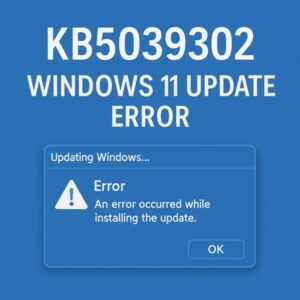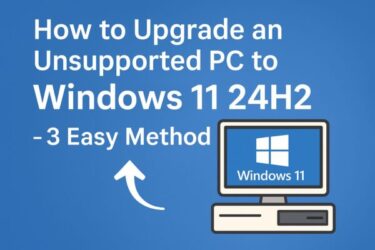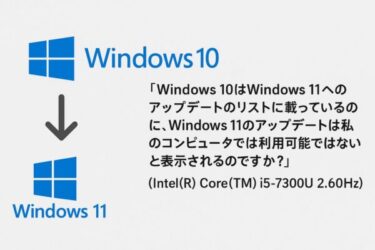
Quick note: KB5039302 was an optional “Cumulative Update Preview” released on June 25, 2024 for Windows 11 22H2/23H2. It has long been superseded by newer cumulative updates. If you still see errors or side-effects that began after installing KB5039302 (or a later rollup that contained its changes), follow the steps below.
Introduction
After Microsoft shipped KB5039302 as a preview update, a subset of devices reported problems ranging from failed installs to UI glitches and app crashes. Microsoft later acknowledged at least one known issue affecting Windows Update automation scripts, and community reports highlighted additional symptoms like taskbar problems and blue screens on some configurations. Most of these issues were later mitigated in subsequent cumulative updates.
This guide explains:
- What KB5039302 is and why it still matters in 2025
- Who is most likely affected
- A safe, fastest path to recovery
- Detailed fixes (basic → advanced) with rollback options
What is KB5039302?
KB5039302 is a June 25, 2024 optional preview for Windows 11 version 22H2/23H2. Preview (aka “Week D”) updates are not mandatory; their contents roll into the following month’s Patch Tuesday release. If your device installed it—or a later cumulative update that included the same bits—you might have encountered related issues.
Common Symptoms Seen After KB5039302
- Install failures (e.g., 0x80246017, 0x800f0922), sometimes tied to automation tooling or servicing stack edge cases.
- Taskbar / shell glitches or stability issues on certain PCs (community reports). Reddit
- Intermittent BSODs, app crashes, or performance slowdowns that cleared after uninstalling the preview on some systems (community reports).
Important: Microsoft’s current Windows 11 release health pages for 23H2/24H2 show no active, broad KB5039302-specific block, and more recent cumulative updates address multiple media/DRM/renderer issues. Always prefer the latest cumulative update.
Who’s More Likely to Be Affected?
- Devices with outdated or custom drivers (GPU, Bluetooth/USB, chipset), or systems recently changed via overclock/XMP.
- PCs that rely on automation scripts to drive Windows Update (the KB5039302 preview exposed an issue here, later fixed).
The Fastest Safe Fix (TL;DR)
- Install the latest cumulative update for your Windows 11 version (this replaces preview bits and carries fixes).
- If problems persist, uninstall KB5039302 (or the earliest preview where issues began), then reboot and apply the newest Patch Tuesday build.
- Update critical drivers (GPU, chipset, network, Bluetooth/USB) from the OEM.
- Run SFC/DISM to heal system files (commands below).
- As a last resort, perform an in-place upgrade repair with the current Windows 11 ISO.
Step-by-Step Fixes
1) Bring Windows Fully Up to Date
- Go to Settings → Windows Update → Check for updates.
- Install the latest cumulative update for your channel (23H2/24H2). This includes rollups that supersede KB5039302 and resolves many downstream issues (e.g., media stack fixes in 2025 preview/security updates).
2) Uninstall the Problematic Preview (If Still Present)
- Settings → Windows Update → Update history → Uninstall updates.
- Select KB5039302 (if listed) and Uninstall.
- Tip: If it no longer appears, it has been superseded by later cumulative updates. Keep installing the latest update instead.
3) Repair System Files
Open Command Prompt (Admin) and run:
sfc /scannowDISM /Online /Cleanup-Image /RestoreHealthThese commands repair corrupted system files and servicing components that can cause install failures or app crashes after updates.
4) Refresh Device Drivers (Key Areas)
- GPU (Intel/NVIDIA/AMD), chipset, Wi-Fi/LAN, Bluetooth/USB.
- If instability began after a driver update, try Roll Back Driver; if drivers are old, update to the OEM-recommended version. (Numerous KB5039302 reports pointed to driver interplay.)
5) Reset Windows Update Components (If 0x800f0922/servicing errors continue)
In an elevated PowerShell or CMD, stop services (wuauserv, bits), rename SoftwareDistribution and Catroot2, then start services again. Reboot and check updates. (Useful when component store metadata is stuck.)
6) Advanced: In-Place Upgrade Repair
Download the current Windows 11 installer and run setup from the desktop → Keep personal files and apps. This refreshes the OS while preserving data—effective against stubborn servicing corruption.
Extra Tips & Workarounds
- Pause updates temporarily if the device is mission-critical, then resume after the next Patch Tuesday. Preview updates are optional by design.
- Clean boot or Safe Mode install can avoid third-party conflicts.
- If you automate updates, note Microsoft’s resolved issue with KB5039302 affecting automation scripts; ensure you’re on current builds/tooling.
23H2/24H2 Release Health: Why Staying Current Helps
Microsoft’s release health pages document known issues and their fixes. Some media pipeline/DRM issues were addressed in Sept 2025 preview and later, so moving forward typically cures lingering regressions inherited from older previews.
FAQ
Is KB5039302 still available?
Yes in the Update Catalog for archival/testing, but it’s superseded. Install the newest cumulative update for your version instead. Microsoft Update Catalog
Do I need KB5039302 to stay secure?
No. Security fixes come with Patch Tuesday releases; preview content later merges into stable. Keep current with the latest cumulative.
I’m on Windows 11 24H2—does this affect me?
KB5039302 targeted 22H2/23H2. However, if your problems began in mid-2024 and never fully cleared, updating to the latest 24H2 cumulative often resolves them because many subsystems were fixed later.
Quick Reference Table
| Symptom | Likely Cause | What to Try |
|---|---|---|
| Install failure (e.g., 0x800f0922 / 0x80246017) | Servicing/automation quirks, component store state | Latest cumulative → reset WU components → SFC/DISM; avoid preview on production. |
| Taskbar/UI glitch or crash | Shell regression in preview + driver interplay | Uninstall preview → update GPU/Chipset → install newest cumulative. |
| Random BSOD after preview | Driver/firmware edge cases | Roll back drivers or update OEM versions; remove preview; in-place repair if needed. |
| Automation scripts failing | KB5039302 bug (resolved later) | Update to builds that include Microsoft’s fix; revise scripts. |
Conclusion
KB5039302 (June 2024) was an optional preview, and most of its rough edges have since been smoothed out by newer cumulative updates. The practical remedy in 2025 is simple: move forward to the latest build, repair any servicing damage (SFC/DISM), refresh key drivers, and only roll back the preview if it’s still installed and clearly linked to your issues.
✔️You might also find these helpful:
▶︎How to Upgrade an Unsupported PC to Windows 11 24H2 — 3 Easy Methods
▶︎Why a Clean Install Might Be the Best Fix for Your PC
▶︎How to Fix Windows Error Code 0x80004005 (Unspecified Error)


